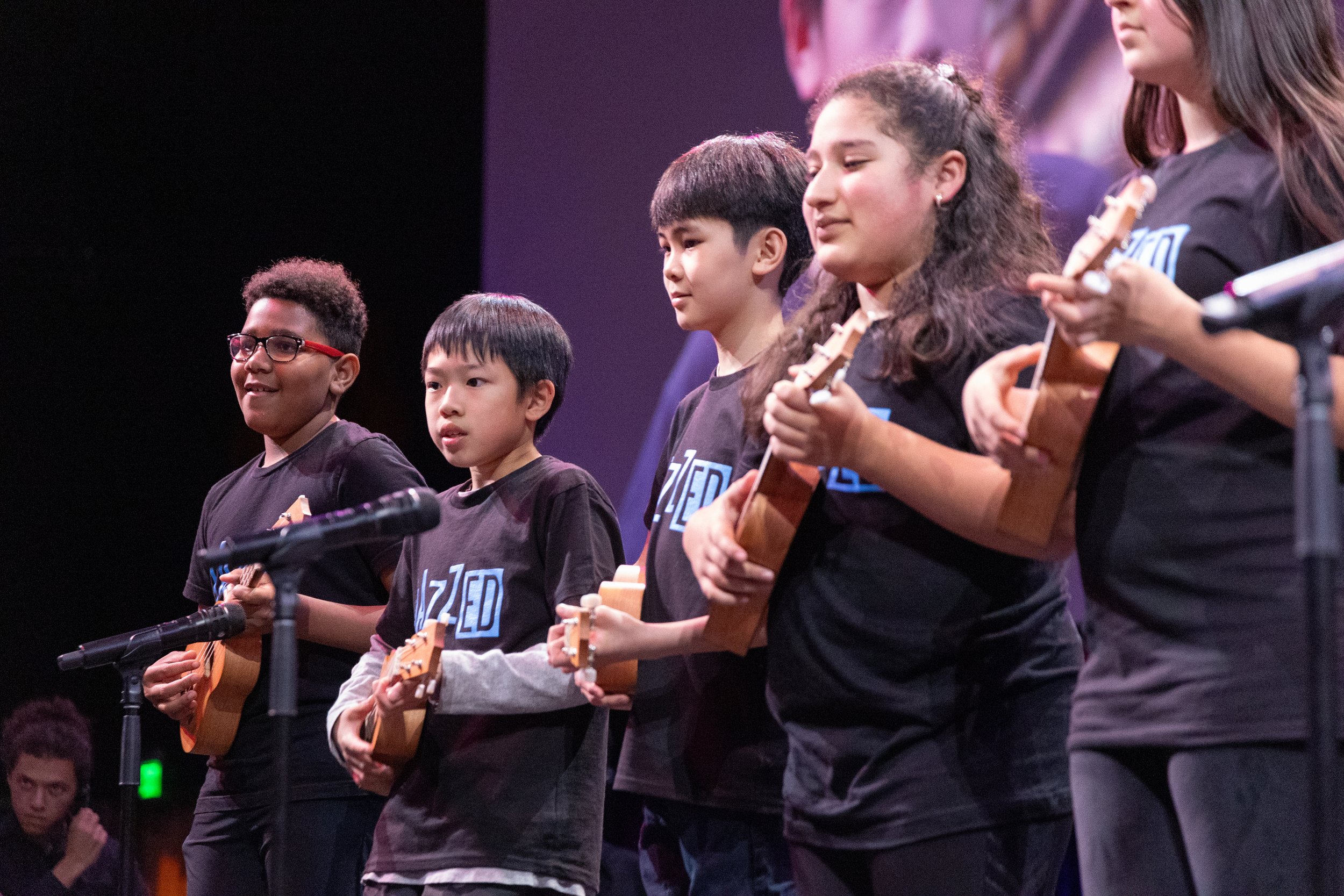Jazz Storytime: Engaging Early Learners in the Community
/Music has long been recognized as a powerful tool for enhancing cognitive development and language acquisition in children as its rhythms and melodies stimulate and support learning.
Combining music and literacy for early learners, Seattle JazzED's Jazz Storytime program can help children build essential skills in an enjoyable way. It’s a unique learning experience where the youngest learners not only listen to stories but actively engage with them through meters and melody.
Igniting a Love of Learning Through Music and Literacy
Jazz Storytime is a dynamic blend of storytelling, live music, and rhythmic engagement, with an emphasis on reading skills that are offered to schools and community partners.
Over the course of four weeks, a jazz singer and accompanist perform classic stories like “Chicka Chicka Boom Boom” which aids in letter recognition and “Jazz Baby” which supports rhythmic patterns and memory. Lasting approximately 30 minutes, every session is engaging and educational.
Interactive and Multisensory Learning
A remarkable aspect of Jazz Storytime is the level of participation it inspires in young learners. From clapping along to playing along with drums and maracas, every child becomes an active participant in their learning journey.
“Storytime has a great impact on the kids. It exposes them to music [and reading] in a way that they can be involved at an early age.” - Audrey Stangland, Jazz Storytime Lead
This multisensory approach keeps children engaged and caters to different learning styles. Kinesthetic learners benefit from physical movement, auditory learners engage with the music, and visual learners value the illustrated storybooks. The excitement in participating creates a positive association with music and learning.
Building a Community
At the heart of Jazz Storytime are the dedicated teachers who engage with the children every week. Their commitment and consistency create a warm, supportive learning environment that builds a sense of community.
“The kids get to know us every week we come back. Today, the kids asked to play along. They usually sit and watch, but today they wanted to get in on it.” – Demarcus Baymore, Jazz Storytime Accompanist
And the sense of familiarity helps children feel more confident.
“There are always a couple of kids who don’t want to participate but, in the end, they always end up liking it. I’ve seen kids come out of their shells and be less shy. The kids are more comfortable talking and participating as a group.” – Audrey Stangland
This shared experience enriches the educational journey for everyone involved.
Are you an organization interested in Jazz Storytime? Contact michael@seattlejazzed.org to learn more about partnering with us and getting Jazz Storytime to your community!
Source: Musical training can improve attention and working memory in children – study (frontiersin.org)


















